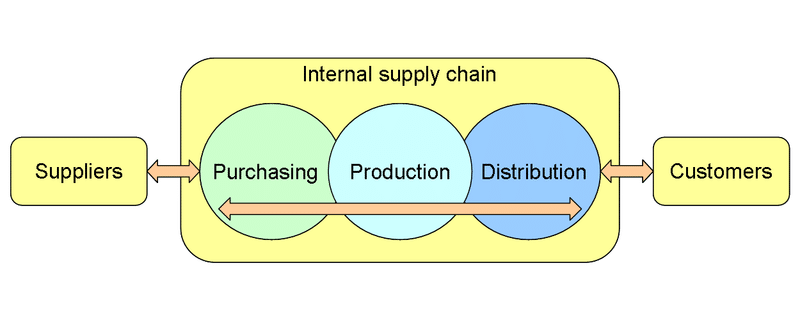The fashion industry is still using very old business paradigms. Labels and tags are rarely standardized, supply chains are long and complex, and establishing intellectual property rights is very challenging.
Some people have suggested that applying blockchain technology could help remedy many existing problems in the industry. We’re going to look at several current issues, as well as where blockchains might be useful and finally look at the various limitations.
Where Can Blockchain Help
Many people have naively seen blockchain as a panacea to existing business issues. This is far from the truth. However, there are some very real applications within a fragmented industry such as fashion.
Supply Chain Management
Blockchains have been discussed for application in supply chains for several years now. Projects like VeChain and Waltonchain have already demonstrated a use case. Its ability to be effective within fashion makes a lot of sense, given the complex and disunited supply chains that currently dominate the industry. Blockchain can help reduce this complexity, increase transparency and reduce waste.
One of the main supply-chain challenges in the industry is the lack of standardization between tags. This makes accurately tracking products very difficult. In addition to this, there are also major challenges with counterfeit products and difficulties in estimating delivery times.

One approach is to create a transaction on a blockchain every time an item moves from one point to another in the supply chain. This would help to keep track of and audit product. Crucially, once you include data in the blockchain it cannot be changed. This immutability protects against fraud between the different companies in the supply chain. It is a great way to remove the need for these separate companies to trust each other.
Of course, it is not as simple as just using a blockchain. There needs to be a way to accurately check a product in real life. One way to achieve this is through radio frequency identification (RFID). Auditors use this technology to physically verify a product and then the blockchain stores the result.
Reducing Costs
Cost reduction is an obvious and easy-to-implement use case for blockchain technology within fashion. Given the global and complex nature of the supply chains for many brands, reducing payment costs could save the industry a huge amount of money every year. Since many raw materials are made and processed in developing nations in Africa, South-East Asia, and South America, payments can typically be very expensive.
If fashion brands were to use cryptocurrencies for payment, they could significantly reduce their costs. Furthermore, since payment is irreversible, it should help reduce payment cancellation and fraud.
More than this, it may be possible to use smart contracts to manage all payments. For instance, when the delivery of new product reaches the warehouse of a retailer from a factory, an oracle could communicate this event to a smart contract. The smart contract would then automatically execute the prearranged payment of a cryptocurrency to the factory owners.
Smart contracts could also massively reduce the amount of paperwork required between parties. This would, in turn, reduce unnecessary costs and increase efficiencies. The effect would be higher profits for brands and suppliers and possibly lower costs for consumers, a win-win situation.
Inventory Management
Managing inventory is critical for brands. The clothing stock is usually the biggest cost and asset a fashion company has. Ensuring that inventory moves quickly and that there is always a good volume without carrying excessive stock is essential for maintaining profitability. Commentators have suggested that blockchains could help with this.
This is one of the less obvious advantages of blockchain within fashion. Some people have proposed to store the number of units of stock on a blockchain as opposed to existing databases. Furthermore, it would be more efficient to store hashes of this data on the chain. Either way, the hope is that sellers and suppliers could communicate their stock levels with each other via a blockchain. Although, it might increase efficiency and reduce costs if suppliers and sellers were using the same blockchain, the same could be said for a shared database.
The real reason to use a blockchain would be to ensure immutability if the parties did not trust each other to keep accurate stock levels. Of course, to implement a blockchain like this between parties, would require a standardized stock keeping tag to be used.
Much like with supply chain management, it is necessary to use blockchain alongside a physical verification technology like RFID.
Verifying Claims
Consumers are increasingly interested in the sourcing of the clothing they are buying, for both ethical and environmental reasons. News of terrible working conditions and poor environmental standards in developing nations can ruin a brand. Many brands spend huge amounts of resources trying to convince customers that their products have high ethical and environmental standards. However, until now actually verifying these claims has been very difficult.
By integrating blockchain technology, it is possible for consumers to be confident in the claims that companies make. Companies could use it to prove the location of where a product came from and the true brand of a clothing item. Consumers will be able to view and interact with every part of the supply chain of a product, whether that be the sheep farmer who produced the wool or the factory owner.
VeChain has been leading the battle in this regard. Back in 2017, VeChain partnered with the Babyghost label to use blockchain to help the brand communicate the story of its items to consumers. As opposed to RFID, they used near-field communication (NFC) chips to physically verify items. This meant consumers could verify the origin and journey of the item as well as access media of the item as it traveled through the supply chain.
This was a good example of how blockchain, along with other technologies can effectively verify claims, increase transparency and ultimately benefit consumers and brands. The immutability of a blockchain offers a degree of security and transparency that was previously impossible to achieve.
Protecting IP and Royalties
Designers often lose out on much of their intellectual property (IP) and associated royalties. The value of fashion depends on the creativity of these individuals. All too often, they do not receive the share of profits that they should.
It would be possible to attach IP rights to the same documents that are stored with the supply chain and inventory data in a blockchain. All it would take is to timestamp and store a signed legal document applying to the IP rights on the chain. Alternatively, of course, you could store a hash of the document with a link pointing out to the location of the whole file. This could protect creatives and increase their wages, depriving counterfeiters and cheats of profiting at their expense.
In addition, as items were sent out to distributors, and sales were made, by tracking all this, designers could receive the royalties they are due. What’s more, smart contracts could trigger these royalty payments and automate payments to the recipient without the need for intermediaries and paperwork.
[thrive_leads id=’5219′]
Limitations of Applying Blockchain
There are some very exciting applications for blockchain within the fashion industry. However, this optimism should not get carried away, there are some very real constraints.
Consensus Mechanism
One of the issues with blockchains is that there is typically a tradeoff between throughput and decentralization. Many of the blockchain proposals that we have looked at rely on storing a relatively large amount of data in the blockchain. This presents decentralization and immutability issues. It may well be, to meet the data demands, that companies use federated blockchains as opposed to public ones. Unfortunately, this would leave the door open to the potential for collusion between block producers or validators. Ultimately, this could undermine the very security and immutability that the industry is looking for from blockchain.
Reliance on Humans
Remember, that a blockchain is a method to store and share digital information. The blockchain can in no way though help the validity of the information. Any blockchain solution, whether it is for supply chain or inventory management, relies on other technologies such as RFID or NFC chips and ultimately the good will of human beings to upload the correct information. None of the solutions put forth so far, really solve the issue of bad practice among individuals.
Never Miss Another Opportunity! Get hand selected news & info from our Crypto Experts so you can make educated, informed decisions that directly affect your crypto profits. Subscribe to CoinCentral free newsletter now.










